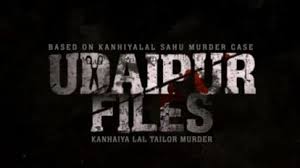New disclaimer, removal of some dialogues: central panel recommends changes in ‘Udaipur Files’; next SC hearing on Thursday

The Central Board of Film Certification (CBFC) review panel has advised the makers of Udaipur Files to add a new disclaimer and remove certain dialogues. This recommendation comes just days before the film’s release. The Supreme Court will hear a related plea on Thursday.
CBFC Panel Steps In
Following a surge in public complaints, the CBFC formed a panel to review the film. The panel included senior officials and external reviewers. After watching the film, they suggested several edits to avoid potential unrest.
They asked the filmmakers to revise the disclaimer. It should now state that the film is “a fictional work inspired by real events” and not intended to target any group. The panel also found a few dialogues problematic. They asked the makers to either modify or remove them, citing concerns over public order.
An official from CBFC said:
“We must protect artistic freedom but also consider public sentiment. A few parts of the film could trigger tension, especially considering Udaipur’s recent history.”
A Film Mired in Controversy
Directed by Raghav Sharma, Udaipur Files focuses on the 2022 murder of tailor Kanhaiya Lal. The victim was killed in Udaipur, allegedly by two radicalized men, after he supported a social media post backing Nupur Sharma. The brutal act shocked the country.
Sharma says the film honors the victim and exposes the system’s failure to prevent such crimes. But critics claim it unfairly portrays a specific community. Civil rights groups and media watchdogs have flagged the film for potentially inciting hate.
Advocate Muneer Khan, who filed the Supreme Court plea, said:
“We are not against art or justice. But this film doesn’t seek justice — it spreads hate.”
The petition calls for a nationwide ban, arguing that the film could lead to riots and unrest. The Supreme Court will examine the case this Thursday.
Filmmakers Respond
Raghav Sharma and his team have defended their work. In a press conference, Sharma said the film is based on facts and legal records. He insists it shows how radicalization impacts society and highlights the flaws in law enforcement.
“People deserve to know what really happened,” he said. “We’re not attacking a community. We’re exposing a failure to protect an innocent man.”
Sharma also said he’s open to changes. “We’ll make reasonable edits, but the core message will stay,” he added.
Political Reactions Add Fuel
The controversy has reached political corridors. Opposition leaders have demanded a ban. They believe the film promotes division and fear.
Meanwhile, several right-wing groups support the film. They’ve accused authorities of censorship and claimed that the outrage is politically motivated.
Rajasthan Chief Minister [Name] commented on the issue without naming the film. “No one should create division in society under the name of art,” he said.
The state government has submitted a report to the Centre. It warns that the film could lead to public disturbances if released without changes.
The Ministry of Information and Broadcasting has not released an official statement. However, officials are reportedly tracking the situation closely.
Supreme Court Hearing: What Could Happen?
Legal experts believe the court will tread carefully. The Constitution protects artistic expression. But the court has also stepped in when content has led to public disorder.
Senior advocate Rekha Venkatesan said:
“The court must balance two interests — freedom of speech and public safety. They may call for another review or delay the release.”
A stay order would set a precedent. Filmmakers dealing with sensitive issues might face stricter scrutiny in the future.
A Pattern Repeats
This is not a new battle for Indian cinema. The Kashmir Files, Padmaavat, and Udta Punjab also faced similar resistance. While filmmakers argue for creative liberty, critics often accuse them of pushing bias or misinformation.
In most such cases, controversies help the film gain publicity. But they also force larger conversations around ethics and responsibility in storytelling.
The debate remains: how do we balance truth, art, and social harmony?
Conclusion
The final call on Udaipur Files now rests with the Supreme Court. Whether or not the film hits theatres this week, it has already sparked a nationwide discussion.
Should films based on real events push boundaries? Or should they avoid content that risks social unrest?
As India’s film industry evolves, these questions will keep resurfacing. And each time, courts, creators, and citizens will need to find the right balance between freedom and responsibility.






